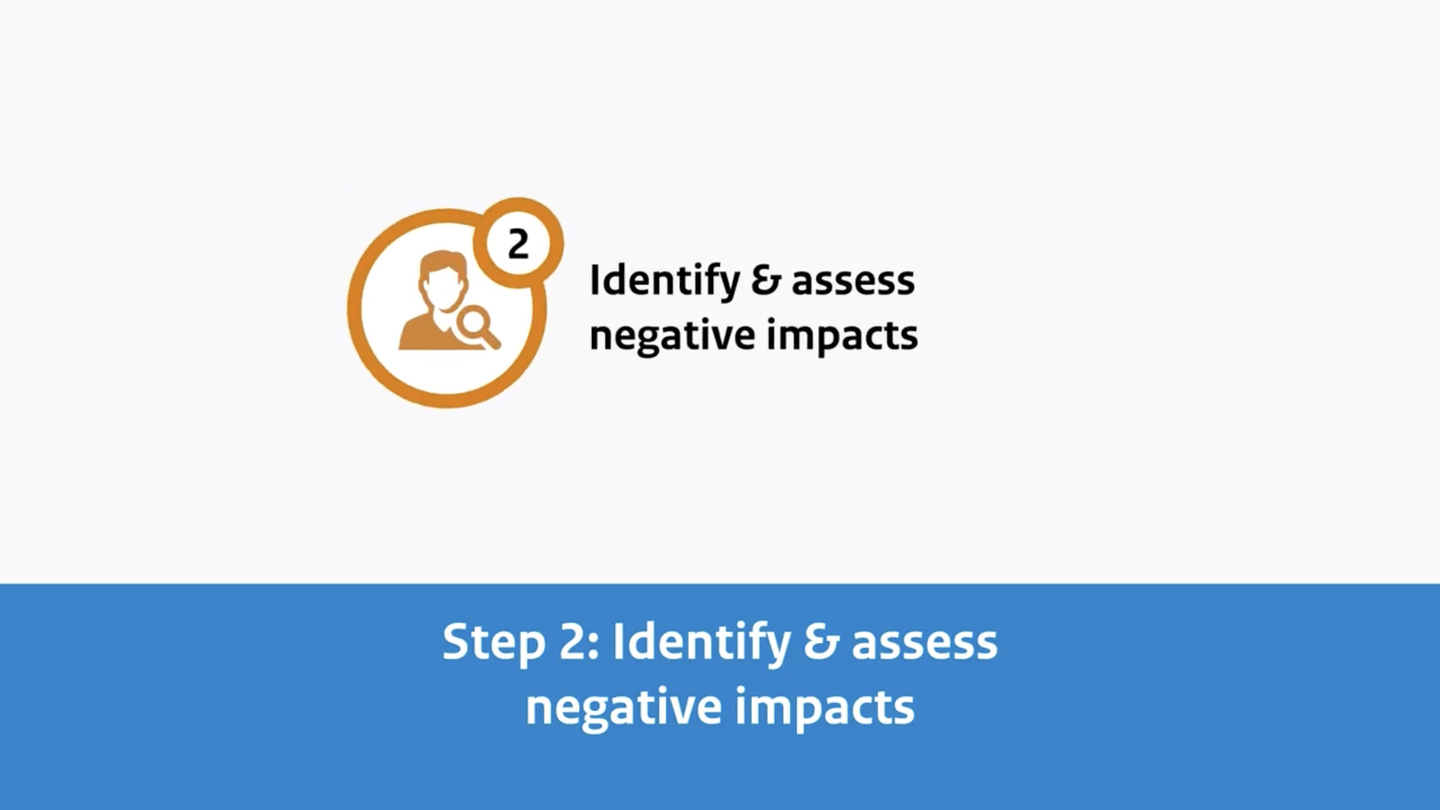Know your supply chain and sustainability risks
A company is often part of one or more supply chains. Supply chains are networks of companies that work together to produce a product. Each company is like a link in a chain and contributes to the final product. For example, the coffee supply chain involves the coffee farmer, the cooperative, the trader, logistics companies, coffee roasters, and supermarkets.
Efficient but untransparent
Supply chains can be complex and international, with little connection or knowledge between downstream (for example supermarkets) and upstream companies (coffee farmers). This is very efficient, but sometimes it can be concerning. Decisions at the end of the chain might harm people or the environment at the beginning of the chain. For example, when an order is changed at the last minute, suppliers are pressured to deliver as cheaply and quickly as possible. Also, delayed payment for products can result in uncertain contracts and poor wages for workers.
Get to know your supply chain
Due diligence is an important concept within IRBC (International Responsible Business Conduct). Due diligence begins with knowing your supply chain(s). But how do you do that, and where do you start? The answer to that question is as simple as it is complex: create an overview, prioritise, and engage with suppliers.
It's important to stress that due diligence is required across the entire supply chain. This means your being responsible for Tier 1, as well as for Tier 2 and 3, and so on. Tier 1 is the supplier you directly do business with. Tier 2 is the supplier of your suppliers. And Tier 3 is the supplier of the supplier of your supplier. For example, this is what the supply chain looks like for a fashion brand.
Tier 1: Garment finishing (sewing, cutting, finishing)
Tier 2: Processed materials are turned into fabrics (printing, dyeing, washing, and embroidery)
Tier 3: Spinning yarns and processing fibres (spinning, weaving, and knitting)
Tier 4: Sourcing raw materials (e.g., harvesting cotton)
General steps for mapping supply chains
- Step 1: Create an overview of all ingredients/products/raw materials your company purchases for the production of goods to be sold. Start with the largest flows in terms of volume and financial value. Specifically for the textile sector, the SER (Social and Economic Council) has created an Excel template to keep track of supplier information.
- Step 2: For each product from Step 1, indicate which supplier(s) provides the product. Also, indicate whether you have a contract with this supplier. If suppliers change frequently, indicate that in the overview.
- Step 3: Indicate from which country or countries each of the products from Step 1 originates. If you don't know, mark it in the overview.
- Step 4: Discuss with the main suppliers (the ones with the largest volume and financial value) where the raw materials come from and add this information to the overview.
- Step 5: Determine over what period and in what steps you can complete the product overview.
Useful tools
- The RBC Risk Checker is a good starting point to assess risks for all sectors.
- The SER's Heat Map shows how risks can be prioritised.
- The risk analyses of the IRBC Covenant for the Food Sector clearly outline the risks associated with 12 raw materials.
- The SER's Whitepaper on International Responsible Business Conduct in Russia and Ukrainesupports companies doing business with Russia and Ukraine in implementing IRBC during times of war.
- The SER's guidefor the textile sector describes risks related to animal welfare for the most commonly used animal materials such as down and feathers, fur, leather, silk, and wool.
- This Excel template, specifically for companies in the textile sector, helps structure and track information about suppliers.
Homework assignment
After finalising this assignment, you will have a list of your company's most important ingredients/raw materials, their origins and the main suppliers.
- Create an Excel list of the top 10 ingredients/raw materials (in terms of revenue and volume). For each product, map the following:
- The main suppliers and the countries where they are located
- Ingredients/raw materials and their origin*
*In some cases, this list may be quite long. Therefore, choose the top 3 ingredients/ raw materials based on volume and risk.
- Supplement the top 10 with ingredients/raw materials that pose an increased risk of harm to people and the environment. For example, shrimp may not sell much in a supermarket but are still important to consider due to an elevated risk. It may also be worthwhile to look at the risk materials that other companies in your sector report.
